Tuesday, February 13, 2018
CCTech First Hackathon AR, VR, VUI and more
By
Vijay Mali
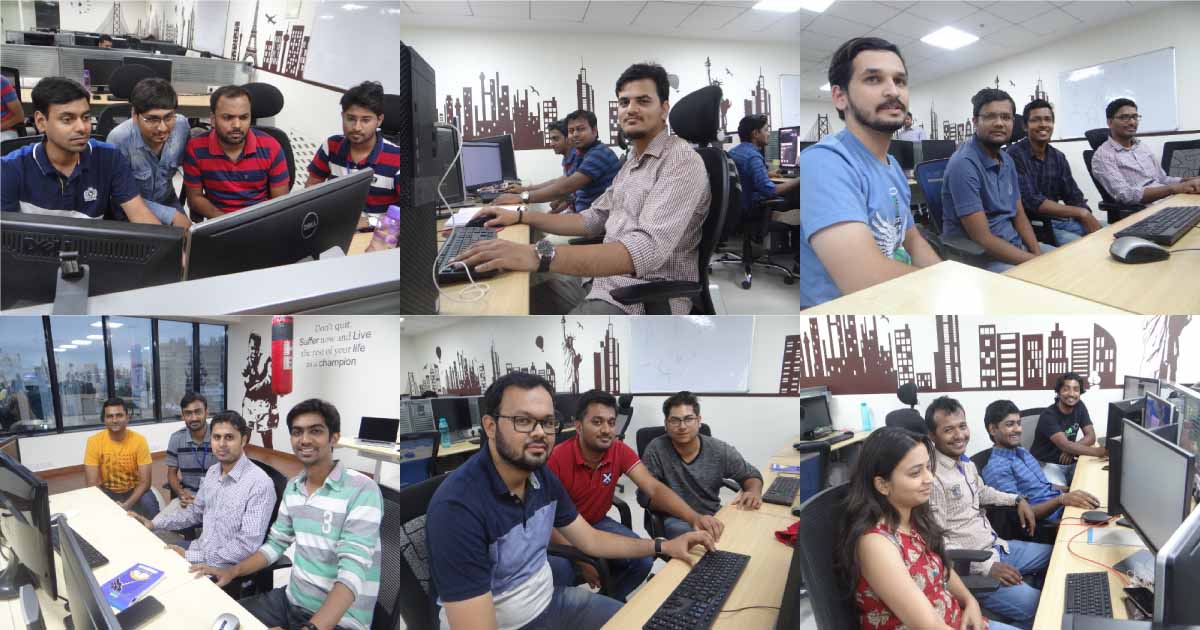
We wanted to bring developers across different departments together and give them a platform to realize their own fresh ideas. It's been demanded for a very long time by our developers (I think all of them wanted to showcase their skills). Finally, they got an opportunity when CCTech CEO Sandip Jadhav announced the first ever CCTech’s hackathon on 29th Jan 2018. He announced to kickstart the hackathon on 2nd Feb 3.00 PM and asked all developers to submit the final work before 3.00 PM on 9th Feb. (Considering the complexity of few ideas, the submission deadline was extended till 12th Feb 5.00 PM).
Just to intensify the competition, Sandip announced the prize money of 32,000 Indian Rupees for winning team and 8,000 Indian Rupees for runner-up team. He set forth few main criteria for deciding the winner, 1) The idea, 2) The implementation 3) User value and 4) Economic and market impact.
Over the next three days since its announcement, we spent time on dividing all the developers in the number of teams, deciding the mentors and judging jury. All the developers were divided into six different teams. Finally, the hackathon was started on 2nd Feb with six participating teams 1) Team Code Warrior 2) Team Flux 3) Team Gravitation 4) Team Motion Builders 5) Team X-Flow and 6) Team Zero Dark QWERTY (I was excited to see the names, I was sure that something interesting is going to come).
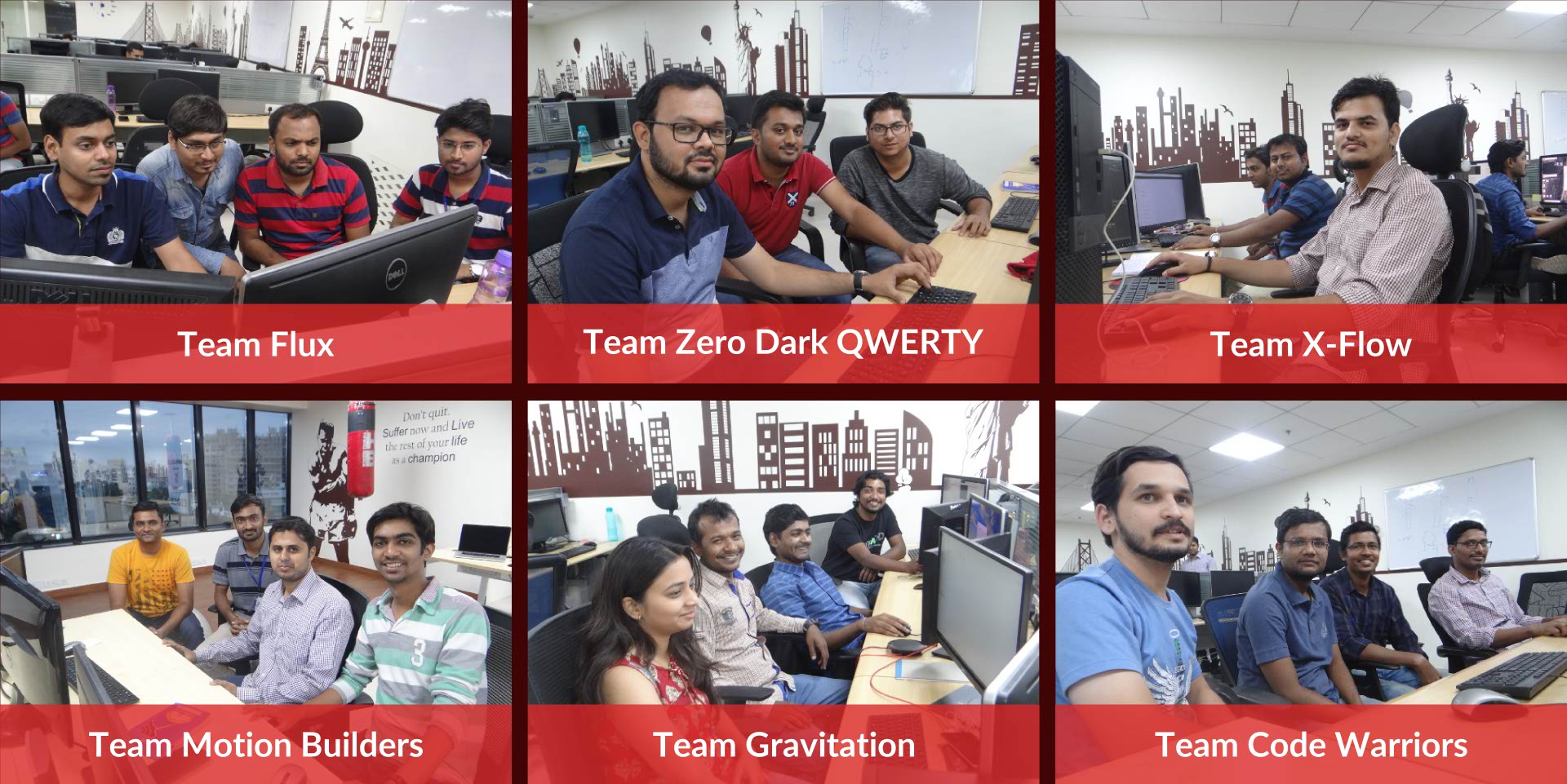
The main idea of the hackathon was to do a cocktail of simulationHub Web Services, Autodesk Forge Platform, Amazon Web Services and, General Electric Predix Platform to create new apps and features. Over next couple days, each team spent time on conceptualizing the idea, discussed those ideas with mentors and finally decided to work on “The Selected Idea”. Following are the ideas they worked on for next 9 days.
Iso-surface CFD post-processing feature for simulationHub web-based post-processor
Custom and intuitive cut section post-processing feature for simulationHub web-based post-processor
Bring CFD results in augmented reality environment using simulationHub and Autodesk Forge Viewer
Manual and automated camera tweening for visualization of simulationHub CFD results in Autodesk Forge Viewer
simulationHub Voice Assistant – A Voice User Interface for working with simulationHub
Integration of pedestrian comfort conditions and Google Maps
Following is the brief of all the ideas and final output.
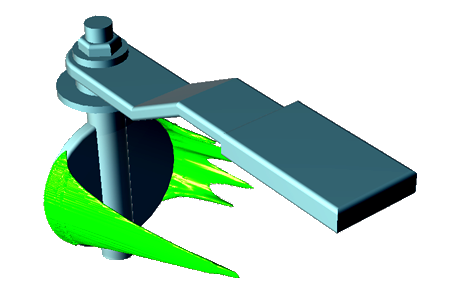
Iso-surface CFD post-processing for simulationHub
Team Code Warrior : Sadashiv Khadilkar, Vaibhav Khopade, Shubham Sarwade, Sumant Landge
Iso-surface is a very effective way of analyzing the CFD results. It helps to identify the region with below or above a specific value. Iso-surface is nothing new in CFD community, but the challenge was to extract the 3D surface and bring the surface rendering in a web browser.
Team Code Warrior brought the unique feature like resolution parameter of iso-surface, run-time value selection slider, a combination of multiple iso-surfaces in a single view.
This feature was rated highest in terms of user value and intuitive design.
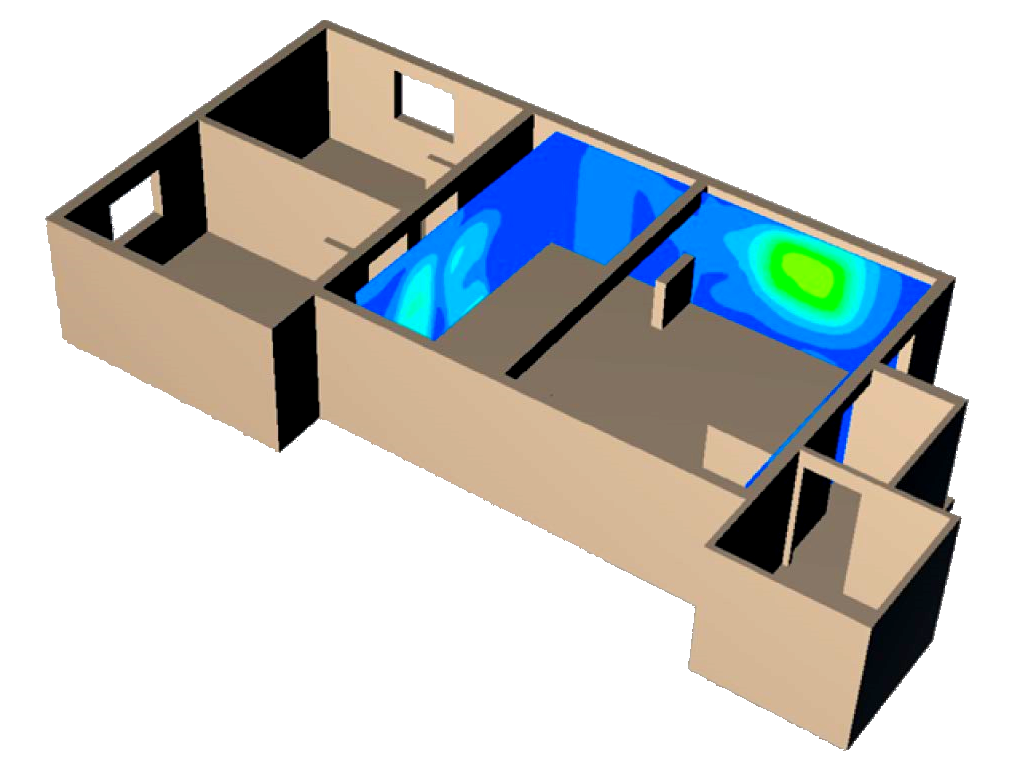
Custom and intuitive cut section post-processing feature for simulationHub
Team Graviton : Vivek Mahajan, Amol Mali, Ketan Shinde, Meenal Anwikar
The most frequently used method to understand CFD results is to view them on 2D sections across CFD domain. CFD data like pressure or velocity are color plotted on these planes to understand their variations on the plane. The CFD community knows this as contour plots. Creating the cut sections aligned / perpendicular to co-ordinate axis is a standard and easy way. This is available in most of CFD post-processing tools. But many times, to understand flow physics, it is necessary to create sections which are not aligned to the co-ordinate axis.
Team Gravitation implemented an intuitive way of creating cut sections and visualizing CFD data on those planes. The cut sections can be created in any random direction just by drawing a polyline in any view. The line is extended in the direction perpendicular to view to create a cut section. A set of connected surfaces is created which then can be individually controlled.
This feature was rated highest in terms of innovative way of implementation and user value.
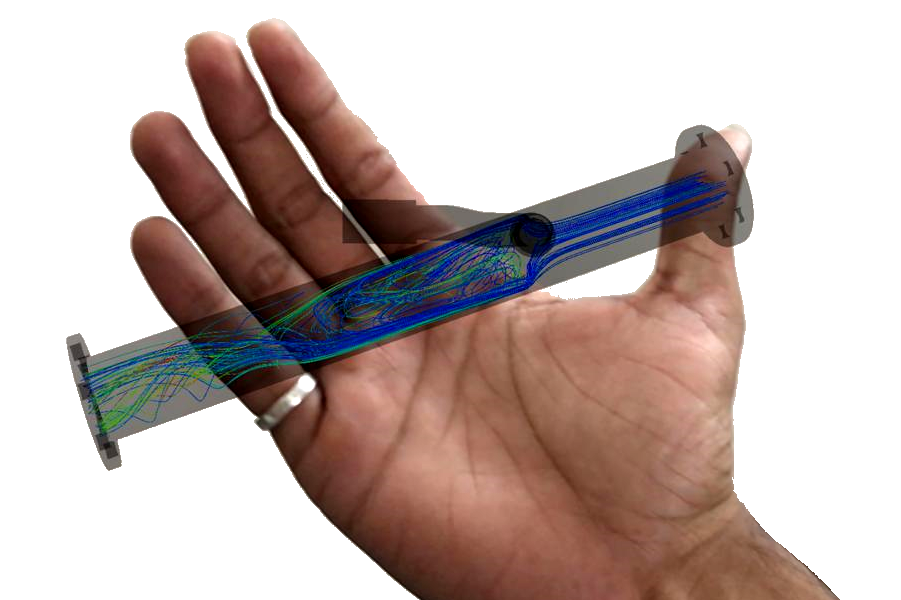
Bring CFD results in the augmented reality environment
Team Flux : Charuhas Naigaonkar, Saurabh Varma, Santosh Kawtikwar, Hrishikesh Thakur
Augmented Reality (AR) is a technology that layers computer-generated enhancements on top of an existing reality to make it more meaningful through the ability to interact with it. AR technology is quickly coming into the mainstream. It is now used in many industries to overlay the products in the real environment to get a feel for how it will fit/ look/perform. Mapping / overlaying the computational analysis results on real objects is a research topic and point of discussion in CAE industry.
Team Flux has taken one step closer to achieve this dream. The team developed a web application that allows users to view simulation results through a smartphone camera directly in their real-world environment. Users can position the results in their environment with a single touch and, walk around it to inspect the visualization in detail, thus providing a true Augmented Reality experience. The app is powered by three.ar.js and WebARonARKit and uses Autodesk Forge Viewer.
The jury selected this idea for runner-up award for innovation, implementation and user value.
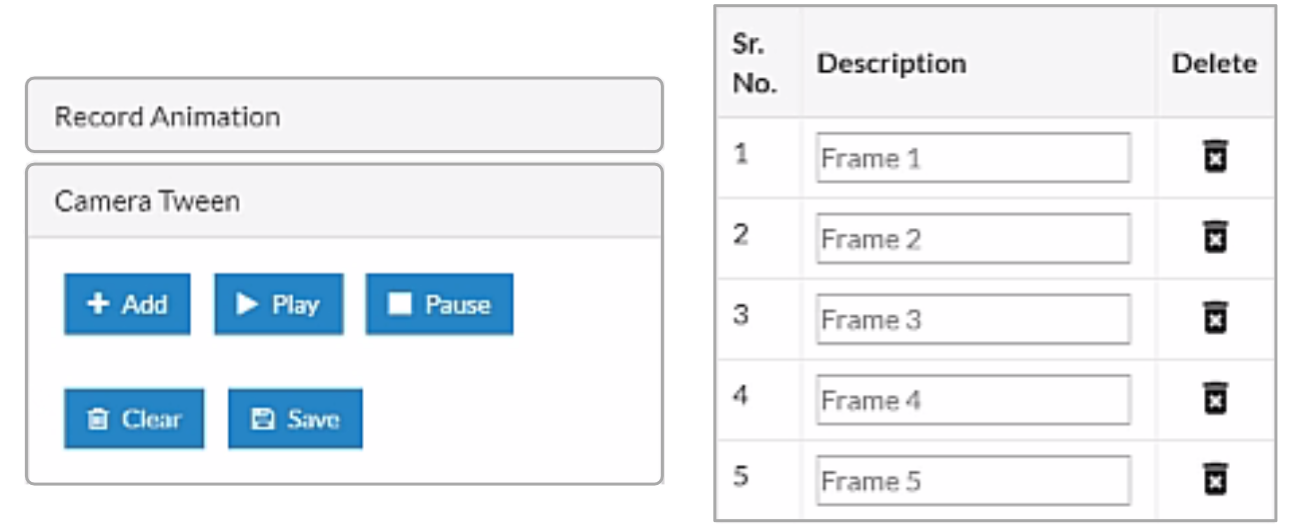
Manual and automated camera tweening for visualization of simulationHub CFD results
Team Motion Builders : Ashish Shete, Sanket Dange, Atharva Patwardhan, Swapnil Kakde
Camera tweening is a method which helps to create awesome product walkthroughs with predefined start and end position of a camera. A tween (from in-between) is a concept that allows you to change the values of the properties of an object in a smooth way. You need tell it which properties you want to change, which final values should they have when the tween finishes running, and how long should this take, and the tweening engine will take care of finding the intermediate values from the starting to the ending point. Over last few months, the simulationHub team was pondering upon the camera tweening and its use in creating the walkthrough for CFD results.
Team Motion Builders took this as a challenge in the hackathon to create a proof of concept (POC) app using tween.js, a JavaScript tweening engine for easy animations, incorporating optimized Robert Penner's equations. They created a framework where a user can add/delete different camera positions as a frame and create a walkthrough using these frames. The team also created an automatic walkthrough using “move along a path-line”. With this, user sees the walkthrough as if they are riding on the flow line.
This feature was rated highest in terms of innovative way of implementation and user value.

simulationHub Voice Assistant – A Voice User Interface for simulationHub
Team X-Flow : Tushar Awate, Nitin Tambe, Sumit Srivastava
A voice-user interface (VUI) makes human interaction with computers possible through a voice/speech platform to initiate an automated service or process. A VUI is an interface to any speech application. Controlling a machine by simply talking to it was science fiction only a short time ago. Until recently, this area was considered to be artificial intelligence. However, with advances in technology, VUIs have become more commonplace, and people are taking advantage of the value that these hands-free, eyes-free interfaces provided in many situations. You might have already experienced a VUI, let it be Apple’s Siri, Amazon’s Alexa or OK Google, VUI is coming in main-stream.
It was a dream for the long time to do CFD simulations just by talking to a system. simulationHub team has already brought the CFD technology to common designers, designers with no expertise in CFD. Team X-Flow has taken this one step ahead. With simulationHub voices assistant, one can talk to a computer and get CFD simulation done. The team has implemented functionalities like dashboard browsing, new project creation, and CFD post-processing navigation. The team has shown a glimpse of how next-generation analysis tools will look like.
This feature was rated highest for the futuristic idea.
Integration of pedestrian comfort conditions and Google Maps
Team Zero Dark QWERTY : Sagar Gupta, Chaitanya Rane, Pratik Patil, Prakhar Nigam
Assessing the impact of building induced aerodynamics effects, on pedestrian comfort and safety, at a large scale is of great interest to local governments, architects, urban planners, designers, and developers. simulationHub has developed an easy-to-use Pedestrian Comfort Analysis App. Team Zero Dark QWERTY created an innovative app using comfort conditions predicted by simulationHub app and Google map.
This app is selected as winner idea for innovation, implementation and user impact.
Closure and prize distribution
Finally, all teams were ready with their presentations on 12th Feb 5.00 PM (Although few of them still wanted to work on “that last piece of code”, you know the typical developers). All of us gathered together to see what is done in last 9 days. Based on the defined criteria, Team Zero Dark QWERTY got the winner position and Team Flux got the runner-up position.
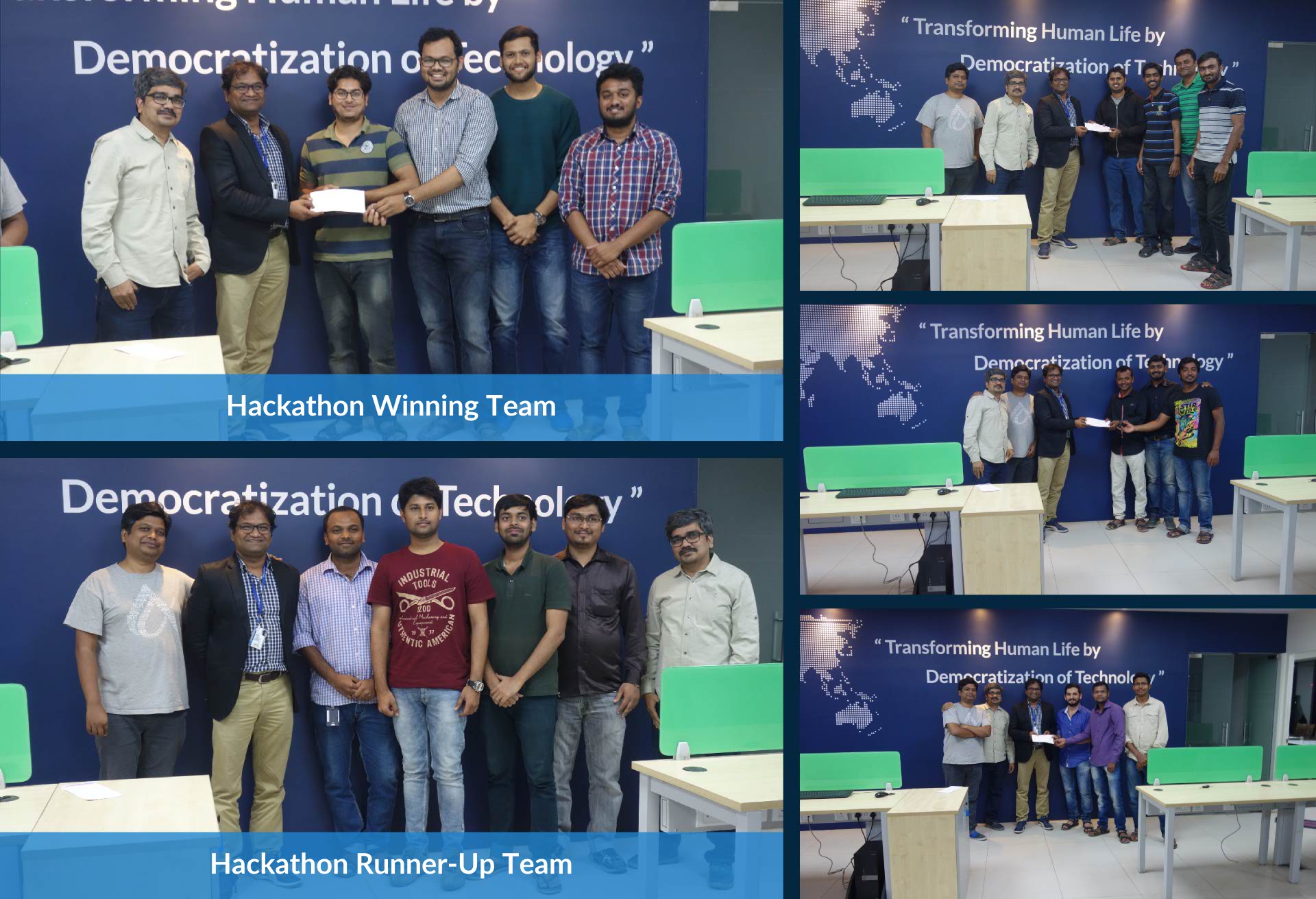
Overall, our first hackathon exceeded expectations, and there have already been calls to hold a second one. We are convinced that the first hackathon will definitely not be the last and we are looking forward to another one in the near future.
About author
Vijay Mali
Vijay is a technology explorer, a visionary and a product maker. As CBO of the company, he plays a critical role in defining the growh path of the company. He also leads the center of excellence (CoE) department at CCTech which is responsible for exploring new technologies & building a strategy to bring it to common designers. Vijay has over 15 years of experience in providing the CFD solutions for many complex problems. He has conceptualized many software solutions including the Pedestrian Comfort Analysis & Control Valve Performer app developed on simulationHub platform. Vijay is known for his transformative way of teaching and trained more than 500 candidates on complex topics like computational fluid dynamics and design optimization. He has delivered talks at various events and engineering colleges about CFD and its use in design optimization of a product. Vijay holds a master degree in aerospace engineering from Indian Institute of Technology (IIT Bombay).
Comments
Recent posts




